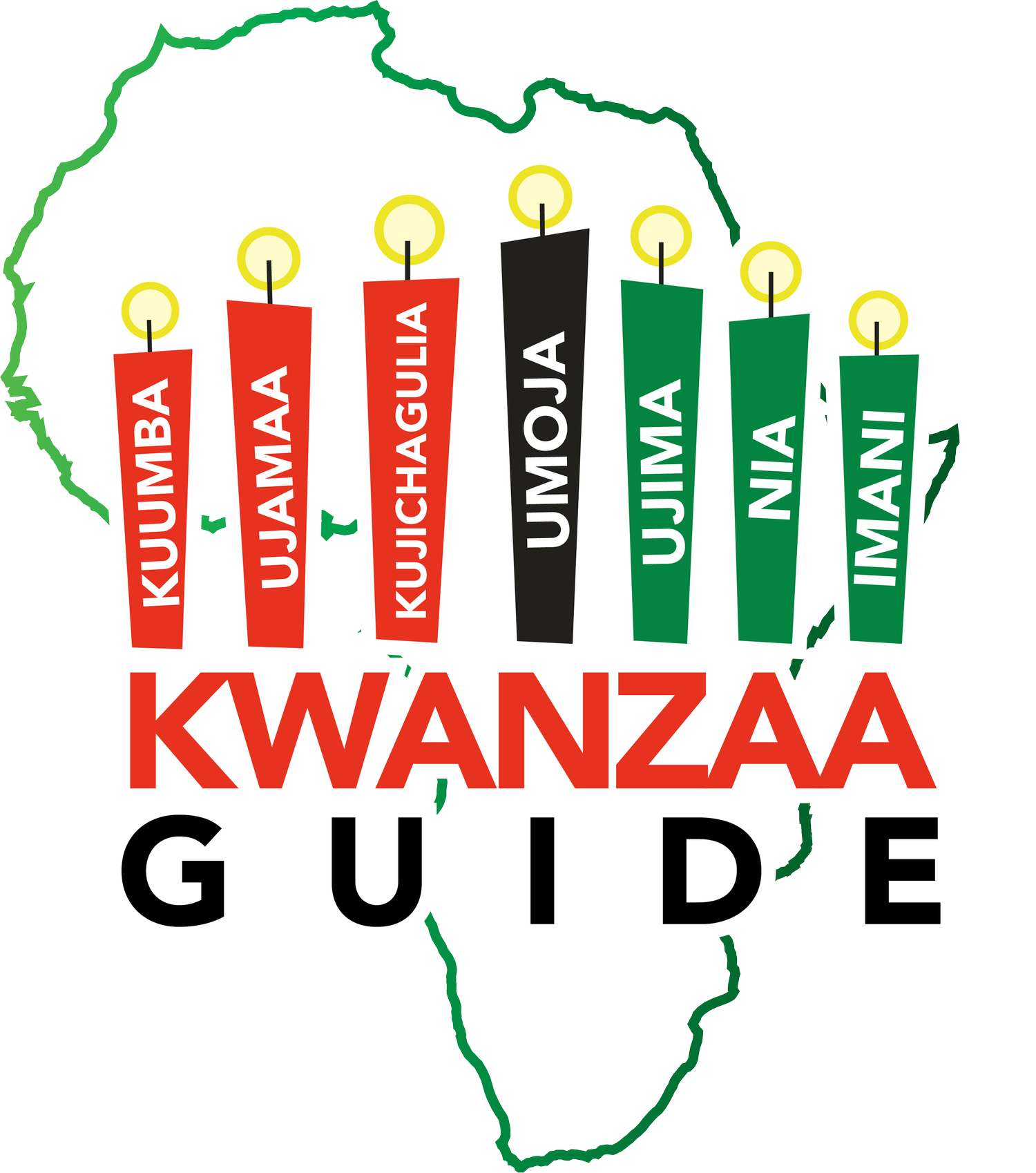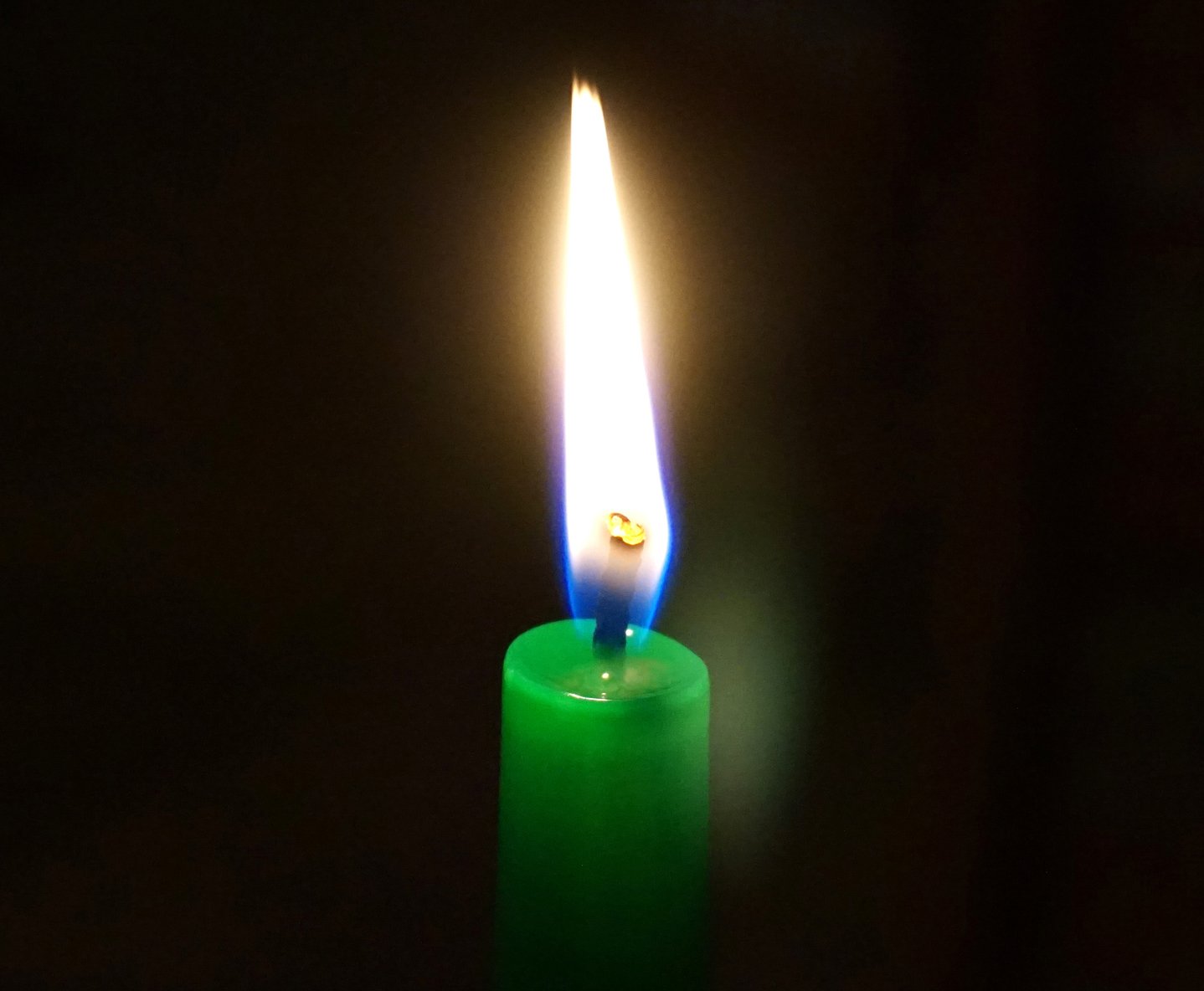Imani
Seventh Day of Kwanzaa
mani ( Faith ) Principle. “To believe with all our heart in our people, our parents, our teachers, our leaders and the righteousness and victory of our struggle.
Explanation and Meaning. The Imani principle calls for African Americans to believe in themselves and their capacity to bring about a better sociality and a better world.
Ingathering. On Imani Day, the family comes together to how the family will support each other.
Giving Thanks and Remembrance. On Imani Day, we give thanks and remembrance to family, friends, and historical figures who have contributed to their lives and the betterment of America. This day we remember the faith that our family members and ancestors had to bring us to this point.
Family Discussion. On the seventh day of Kwanzaa, the family discusses how each family members and the family will give meaning to faith by doing tangible things to show their belief in each other and African Americans.
Candle Lighting Ceremony. On the seventh of Kwanzaa, the family lights the green or candle, corresponding to Imani Day.
Kwanzaa Commitment. During the candling lighting ceremony, each family member makes their own pledge to practice faith.
Kwanzaa Feast. The family enjoys a special holiday meal of their choice. There is no set or mandated meal for Kwanzaa. Enjoy your meal.
Kwanzaa Reinforcing Activity. On Imani Day, the family organizes of activity expressions of faith in each other.
Ujamaa Day
Fourth Day of Kwanzaa
Ujamaa ( Self Determination) Principle. “To build and maintain our own stores and other businesses and profit from them together.”
Explanation and Meaning. The Ujamaa principle instructs us to look toward cooperative economic ventures, working together to build collective wealth.
Ingathering. On Ujamaa Day, the family comes together to pool their resources together. Likewise, at the community level, residents discuss revenue strategies.
Giving Thanks and Remembrance. On Ujamaa Day, the family discusses family, friends, and heroic figures who have come before us and work to provide us with greater freedoms and possibilities.
Family Discussion. One of the activities during the fourth day of Kwanzaa discussing centers on building collective wealth or revenue for the family.
Candle Lighting Ceremony. On the second day of Kwanzaa, the family lights the red or Ujamaa candle, which corresponds to Ujamaa Day.
Kwanzaa Commitment. During the candling lighting ceremony, each family member pledges to come up with ways to increase family wealth and revenue.
Kwanzaa Feast. The family enjoys a special holiday meal of their choice. There is no set or mandated meal for Kwanzaa. Enjoy your meal.
Kwanzaa Reinforcing Activity. On Ujamaa Day, the family organizes an activity around pooling resources.
Ujima Day
Third Day of Kwanzaa
Ujima ( Collective Work and Responsibility ) Principle. “To build and maintain our community tougher and make our brothers and sisters' problems and solve them together.”
Explanation and Meaning. The Ujima principle is the ultimate expression of the African proverb: "I am because we are, and because we are, I am." We are all responsible for our successes and our shortcoming, the raising of our children, and the guidance and mentoring of our youth.
Ingathering. On Ujima Day, the family comes together to how the family will be supportive of each other.
Giving Thanks and Remembrance. On Ujima Day, we give thanks and remembrance to family, friends, and historical figures who have contributed to their lives and the betterment of America.
Family Discussion. On the third day of Kwanzaa, the family discusses how they have been supportive of each other and how they will be supportive of each other in the future.
Candle Lighting Ceremony. On the third day of Kwanzaa, the family lights the green or candle, which corresponds to Green Day. The green candle is symbolic of the benefits, rewards, and achievements resulting from work and continuous effort (struggle).
Kwanzaa Commitment. During the candling lighting ceremony, each family member pledges to support each other and work to help solve community issues- low educational performance, youth involvement in antisocial activities.
Kwanzaa Feast. The family enjoys a special holiday meal of their choice. There is no set or mandated meal for Kwanzaa. Enjoy your meal.
Kwanzaa Reinforcing Activity. On Ujima Day, the family organizes an activity around supporting each other and the community.
Umoja Day
Umoja Day of Kwanzaa
Umoja ( Unity) Principle. To strive for and maintain unity in the family, community, nation, and race.
Explanation and Meaning. The Umoja principle instructs us to build and reinforce the ties- love, caring, and sharing that bind us together as family and community.
Ingathering. On Umoja day, the family comes together to renew and reinforce the bonds of love, caring, and sharing, i.e., unity. The tone, discussion, and activities center around the building and strengthening of family bonds as parents to children and children to parents, as well as siblings to siblings.
Giving Thanks and Remembrance. On Umoja Day, the family expresses appreciation for the blessing the family has received through their work and achievement and the support the family and individual members have received from others. This is also a time to remember and give thanks to family members and generations of African Americans whose work, struggle, and achievement have made it possible for Black people to live with greater freedom and possibilities.
Family Discussion. One of the activities that occur during the first day of Kwanzaa is discussing the meaning of the seven Kwanzaa symbols- mat, candleholder, the basket of fruit, ears of corn, Unity Cup, *Gifts, Seven Candles. Here the family many discussed the contributions of past and present family members and the history of African Americans. Discussion of the Kwanzaa symbols is instructive for children and parents.
Candle Lighting Ceremony. On the first day of Kwanzaa, the family lights the black or Umoja candle, which corresponds to Umoja Day. The lighting of the black candle also instructs that everyone in the family must strive for unity among black people, beginning in the family and then extending outward. This unity is not in opposition to others but rather strengthening moral and social bonds of family and community.
Kwanzaa Commitment. During the candling lighting ceremony, each family member pledges to do all they can in the way they can to build and reinforce unity in the family and community.
Kwanzaa Feast. The family enjoys a special holiday meal of their choice. There is no set or mandated meal for Kwanzaa. Enjoy your meal.
Kwanzaa Reinforcing Activity. On Umoja Day, the family organizes or thinks of an activity that highlights and reinforces unity- build and strengthening family and community bonds.
First Fruits Celebration
It all begins with an idea.
First Fruits Celebration
December 26 – January 1
Kwanzaa is a seven-day African American holiday. The source of Kwanzaa comes from the First Fruits celebrations in traditional African society. The First Fruits celebrations was a festival held at the end of the year to give thanks, remembrance, and joy at harvesting the crops, which was a collective endeavor (Ujima, “Collective Work and Responsibility.”
How To Celebrate Kwanzaa
Fundamentally, the Kwanzaa celebration has xx basic activities that define each day of Kwanza. Families and communities certainly will add what they see as additional meaningful activities. That said, Essential daily Kwanzaa activities are as follows:
1. Ingathering. Each day of Kwanzaa, the family or community is called together to renew and reinforce the bonds of love, caring, and sharing. The ingathering may occur in an intimate family setting, extended family and friends context, or a larger setting.
2. Giving Thanks and Remembrance. During the ingathering activity, time is set aside to give thanks for life and the blessing that the family or community has received during the year: the birth of a child, expansion of the family through marriage, remembering those who have passed on.
3. Family Discussion. One of the activities that occur during the ingathering activity is discussing the meaning of the seven Kwanzaa symbols- mat, candleholder, the basket of fruit, ears of corn, Unity Cup, *Gifts, Seven Candles. Here the family many discussed the contributions of pass and present family members well as the history of African Americans.
4. Candle Lighting Ceremony. As part of the ingathering activity, each day of Kwanzaa, the family lights the candle which corresponds to that particular day: black candle, the first day of Kwanzaa, and then alternating with red and green the rest of the days.
5. Kwanzaa Commitment. During the candling lighting ceremony, each family member makes a pledge relative to that day/principle of Kwanzaa ( e.g., first day Unity, last day, Faith)
6. Kwanzaa Feast. The family enjoys a special holiday meal. There is no set or mandated meal for Kwanzaa. Enjoy your meal.
7. Kwanzaa Reinforcing Activity. Each day, the family organizes or thinks of an activity to highlight and reinforce the principle for that day. On Unity Day, the first day of Kwanzaa, the family may, for example, prepare the meal for the fest together or go for a walk together.
Kwanzaa gift giving is directed at children and youth , conditioned on commitments made and kept. Additionally, what ever gifts are given, a book and heritage symbol must accompany the gift (s). The book is given to reinforce learning and education and the heritage symbol is a reminder of our African heritage.




